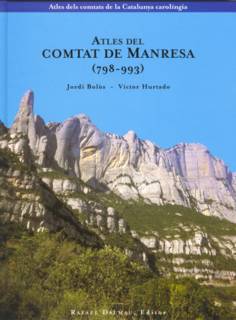 º
º
J. Bolòs - V. Hurtado, Atles del comtat de Manresa (798-993), Barcelona, 2004
[Atlas of the county of Manresa]
ABSTRACT:
Index. The index includes all the place.names that appear in the place-names map.

Els estudis d'arqueologia del paisatge han de permetre que entenguem com es va organitzar el paisatge actual al llarg dels segles. Ha de fer possible comprendre com es crearen els pobles, les vies, els camps o els límits. D'una manera especial ens interessarem per les grans transformacions que s'esdevingueren al llarg de l'edat mitjana (segles VI-XV), tot i que sigui bàsic, a l'hora de fer aquesta mena de recerques, tenir una perspectiva de llarga durada.
 º
º
J. Bolòs - V. Hurtado, Atles del comtat de Manresa (798-993), Barcelona, 2004
[Atlas of the county of Manresa]
ABSTRACT:

0 Comments:
Post a Comment
<< Home